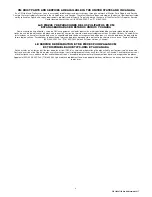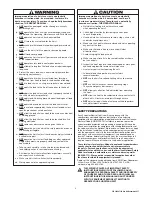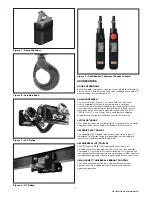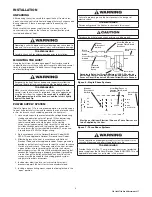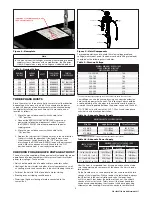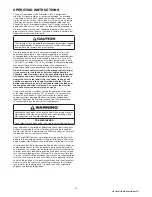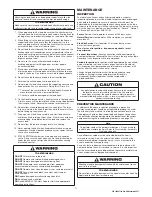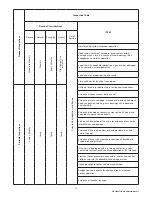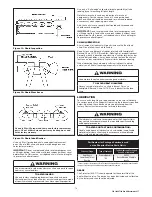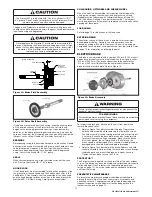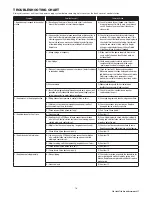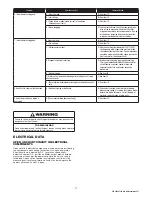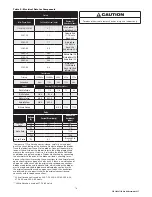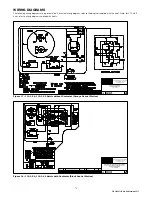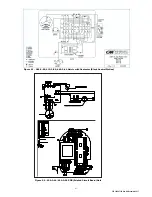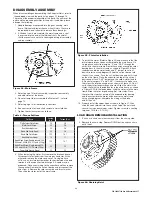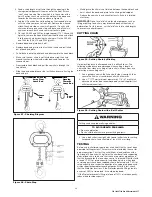
10
P/N 192047138 Rev AA November 2017
OPERATING INSTRUCTIONS
The hoist is equipped with a Protector™ that is designed to
allow the first gear to slip on an excessive overload. An overload
is indicated when the hoist speed slows down, it raises the load in
a jerky manner or it will not lift the load at all. Also, some clutching
noise may be heard if the hoist is loaded beyond rated capacity.
Should this occur, immediately release the UP button to stop the
operation of the hoist. At this point, the load should be reduced to
the rated capacity or the hoist should be replaced with one of the
proper capacity. When the excessive load is removed, normal hoist
operation is automatically restored.
The Protector™ is susceptible to overheating and wear when slipped
for extended periods. Under no circumstance should the Protector
be allowed to slip for more than a few seconds.
Due to the above, the hoist is not recommended for use in any
application where there is a possibility of adding to an already
suspended load to the point of overload. This includes dumbwaiter
installations, containers that are loaded in mid-air, etc. Also, if the
hoist is used at unusual extremes of ambient temperatures, above
150º F (65ºC). or below 15ºF (-9ºC)., changes in lubricant properties
may permit the hoist to raise larger loads than under normal
operating conditions and present possibility of damage or injury.
On units without contactor (hoists with orange control station)
it is necessary to stop the hoist before changing direction.
Therefore, when lowering a load, the push button in the control
station must be released momentarily before the UP button is
depressed to raise the load. If this is not done, the hoist will
continue to operate in the down direction while the UP push
button is depressed, and it will continue to lower the load until
the control push button is released. As a result, the direction
must not be reversed quickly (plug reversed).
There are no electrical switches to stop the operation of the hoist
at the upper and lower limits of lift. As a result, it is necessary to
release the push button in the control station to stop the hoist
components from damage. However, continued, prolonged or
repeated slipping of the Protector will damage the Protector and
cause overheating of the internal hoist components.
Allowing the hook block to run into the hoist when raising a load or
allowing the chain stop to run into the hoist when lowering a load
may break the chain and allow the load to drop.
TO AVOID INJURY:
Do not allow the hook block or the chain stop to contact the hoist frame.
Hoist operation is controlled by depressing the control station push
buttons. Depressing the UP push button will move the load hook
toward the hoist head; depressing the DOWN push button will move
the load hook away from the hoist head.
The UP and DOWN buttons are momentary type and the hoist will
operate in the selected direction as long as the button is held in the
depressed position. Release the push button and the hoist will stop.
It is preferred that the load always be tied off with auxiliary chains or
cables before access to the area beneath the load is permitted. As
an alternative, the system may be designed such that malfunction or
failure of one hoist’s load bearing components does not cause load
loss and/or overloading of any other hoists in the system. Note that
in such a system, hoist performance and function must be monitored
visually or with the use of load cells. Check the supporting structure
to which the load hook is to be attached. Make sure the attachment
point as well as the structure have sufficient strength to withstand
several times the load imposed. If in doubt, consult a registered
engineer and local building codes.


